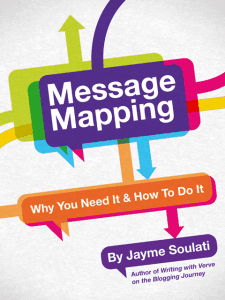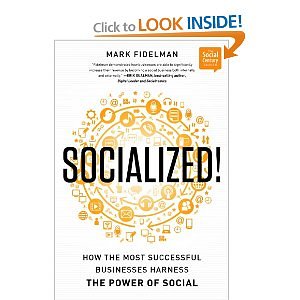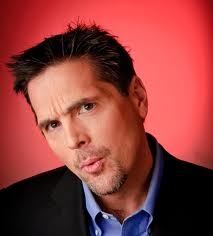The e-cigarette is not my favorite topic. Nor am I in the business of supporting e-cigarettes or Juul as it struggles with decisions about selling vaping products to children. I am, however, a message mapping guru. This post is one of my all-time favorites. You’ll see data from 2014 when I originally published it, and you’ll see updated information from the Centers for Disease Control and Prevention about the dangers of e-cigarettes for adolescents.
Why Message Mapping
Over the years, I have perfected message mapping since my Chicago agency days. This tool helps leadership clarify their position to everyone outside the company.
Regardless of the size of your business, everyone benefits from the message mapping process. It lends clarity to products, services, company description, and more. At the same time, message mapping is wonderful for use by internal teams. Care to try it? I’m ready to work with you!
Cigarettes and Message Mapping
Cigarette smoking kills an estimated 5.4 million people a year worldwide, a figure that’s risen 30 percent over the last 20 years, according to Forbes, “The Future of Smoking Lies Somewhere in Here,” June 16, 2014.
Then why is Philip Morris International (PMI), the subject of the story, thick in development of next-gen cancer sticks, vaping devices with new flavoring and a heat-not-burn technology with all the perks and pizazz of nicotine for the addicted?
At a recent March 2019 conference, Philip Morris and Altria are not only enduring the negatives against smoking and e-cigarettes but are actually successful.
Why E-Cigarettes and Smoking?
The answer is simple. Cigarettes, e-cigarettes and even vaping are a lucrative business for the global giant. The world over, intense taxation on cigarettes plagues smokers. PMI paid $48.8 billion of $80 billion in revenue to the tax man in 2013. Smokers are eager to adopt a new, “healthier” alternative to cancer-breathing smoke sticks. We know now that healthier is not the word to describe e-cigarettes and vaping. In fact, vaping kills, according to the latest lung disease research.
To give you more of a sense of how widespread smoking remains, 6 trillion cigarettes are sold globally each year. “Serbia and Eastern European nations out smoke the competition despite having tax rates over 50 percent,” according to Forbes.
PMI spends $650 million on research to develop an e-cigarette (and various prototypes) with a battery heater in black that looks like an old-fashioned cigarette holder. Tobacco is heated within a paper cartridge with a filter just below the burning point. The smoker gets the nicotine and flavors with “fewer harmful combustion by-products like benzene and tar.”
The Philip Morris Quandary
This Forbes story from June 16, 2014 grabs you from the first paragraph. How many nonsmokers gag when confronted with the offensive exhalations from peers who smoke? And, how many smokers secretly wish there was an alternative to their bad habit and the opportunity to be welcome in public?
That puts Philip Morris International (and its industry peers) in a particularly challenging global position. Does it continue to output cancer-causing smokes to the tune of 6 trillion annually, or does it do the right thing to try to find a healthier alternative?
PMI is well on its way to the latter; however, hold your applause. In the last 10 years, 540 million people have died from cigarette smoking (do the math from the first sentence).
Still, it’s an intriguing public relations challenge with high levels of complexity. Let’s see how a PR team would craft a message map for Philip Morris and its new e-cigarette. I don’t work for any company associated with cigarettes; however, this is the recommended approach to a message mapping challenge for the global behemoth.
 E-Cigarette Message Map for Philip Morris
E-Cigarette Message Map for Philip Morris
The first step in developing a message map for PMI about its vaping device is to look at the categories required (there may be others):
- Research
- Product
- Investment/Earnings
- Consumers
- Competition
- Health
- Industry
Therefore, I’ll work backward from the Forbes article to map the messages within each category. The end result, hopefully, is your better understanding about the go-to-market strategy for messaging a product like an e-cigarette. Mostly, I circled relevant facts throughout the article pertaining to PMI, other industry sources as well as competitive data.
While the published article does not match the message map PMI would create for its e-cigarette, it’s pretty darn close. You’ll get a solid sense of why message maps are important for your own business, product or service.
So, what I’m doing is to highlight themes about e-cigarettes and associated “messages” from the published article in Forbes about Philip Morris. All of these statements are taken directly from Forbes. The attribution and wording are exact and credited to Forbes. For the sake of length, I’ll only include a few in each category. Ready?
Research
- Studies in various countries show that e-cigarettes have close to 100% consumer recognition among smokers. Because of that, 20% to 50% have tried them at least once. However, less than 10% use them regularly.
- Because filters, says Calantzopoulos, simply can’t remove the dangerous by-products of burning tobacco that cause lung cancer emphysema and heart disease.
- While PMI sells its products, it’s also conducting tests in Petri dishes and on human cells using the cutting-edge technique known as systems biology to try to assess how the new devices affect known pathways to cancer and other smoking-related diseases.
The Product
- The first new model is an electronic device that looks like an old-fashioned cigarette holder, which heats tobacco to just below the burning point to release the nicotine and flavor of tobacco with fewer harmful combustion by-products like benzene and tar.
- Consumers will try a thin black device that holds a paper tube, while a software-controlled, rechargeable heating element raises the temperature to almost 400 degrees, creating a vapor from the tobacco to release nicotine and flavors. The smoker exhales vapor that quickly dissipates in the air.
- In 2002, PMI gave up on developing a safer version of the combustible cigarette.
Investment/Earnings
- Six trillion cigarettes are sold globally each year; if PMI’s tobacco heater attracts even a 5% share, that would boost profits, already a hefty $8.6 billion, by more than $1 billion a year.
- PMI has invested $650 million with the current expenditure ramping up past $200 million annually to try to help the world’s smokers.
- Of PMI’s $80 billion in revenue last year, $48.8 billion went to taxing authorities.
- PMI has doubled earnings every 10 years since Andre Calantzopoulos, CEO, joined the firm in 1985, and investors have earned 122% since the spinoff in 2008, compared with 67% for the S&P 500 index.
Consumers
- PMI is betting that smokers prefer the taste of real tobacco over e-cigarettes.
- PMI is trying to prove to regulators that its great new product won’t actually attract new customers.
- Consumers buy 6 trillion cigarettes worldwide each year.
- Serbia and Eastern European nations outsmoke the competition despite having cigarette tax rates over 50%.
Competition
- Lorillard is all-in on e-cigarettes, having purchased Blu, now one of the largest U.S. brands, for $135 million in 2012.
- Altria, PMI’s former U.S. parent, is test-marketing MarkTen e-cigs.
- Reynolds American introduced Premier in 1988 but withdrew it months later after the American Medical Association urged the FDA to ban it. Reynolds tried again with Eclipse and was sued by the Vermont attorney general.
Health
- “These products can bring the biggest single benefit in a short period of time, in terms of public health,” said Andre Calantzopoulos, PMI CEO.
- Cigarettes smoking kills an estimated 5.4 million people a year worldwide, a figure that’s risen 30% over the past 20 years.
- If PMI proves successful, the new products will surely save the lives of tens of thousands of their customers. But they could also make smoking less scary to those who don’t smoke, creating new nicotine addicts.
- If the product is 80% safer and used by the 20% of U.S. adults who smoke, that’s a public health win.
Industry
- The tobacco analyst at Wells Fargo believes consumption of e-cigs and other delivery devices deemed safer could eclipse conventional cigarettes by 2030.
- Past president of the American Lung Association supports e-cigarettes as a way to wean smokers off their favorite smokes.
- Anti-tobacco activist with University of California thinks the FDA should block new tobacco products until cigarette manufacturers remove traditional cigs from the market.
- American Lung Association says,”The most heavily marketed brands by the major tobacco companies are the most heavily used ones by kids.”
The Message Map
- Imagine how many message maps Philip Morris International has for its business units. Would you say about two dozen?
- Because messaging is critical, ensure your company has one! First, get a corporate map done to fuel your communications strategy. Just like the exercise above, a message map bring clarity for the entire leadership and marketing teams. It also forms the basis of factual storytelling, just like the exercise above.
- On your growth continuum, use a message map as the first tool map out strategy and message from the outside-in.
About the Author
This article originally appeared August 26, 2014 on Soulati.com, “Soulati-‘TUDE!” by Jayme Soulati, a message mapping master and public relations marketer.





 Engaging on social media channels with customers and prospects does not a social business make. Being a social business requires this for starters, and more. Becoming social inside and out by engaging stakeholders at all levels takes consistent effort and clarity from the C-suite to the sales organization and elsewhere.
Engaging on social media channels with customers and prospects does not a social business make. Being a social business requires this for starters, and more. Becoming social inside and out by engaging stakeholders at all levels takes consistent effort and clarity from the C-suite to the sales organization and elsewhere.









